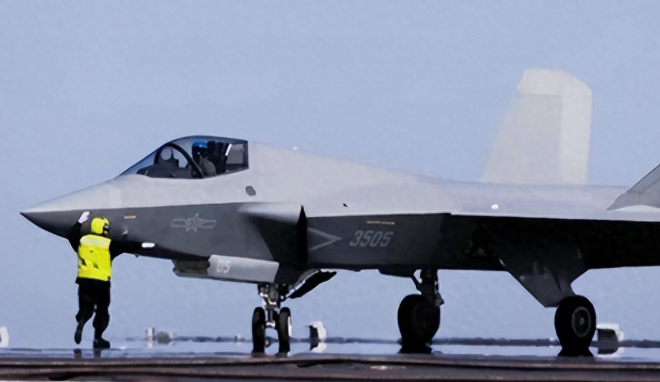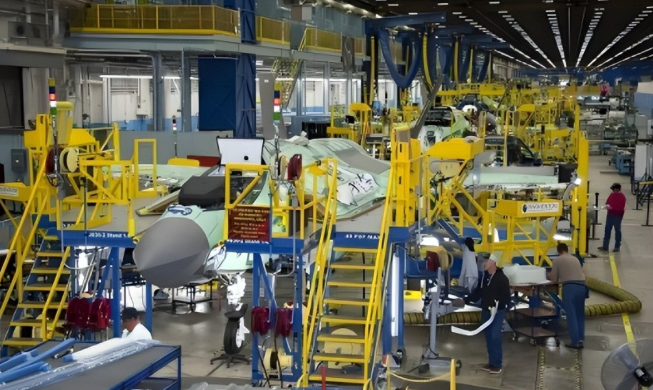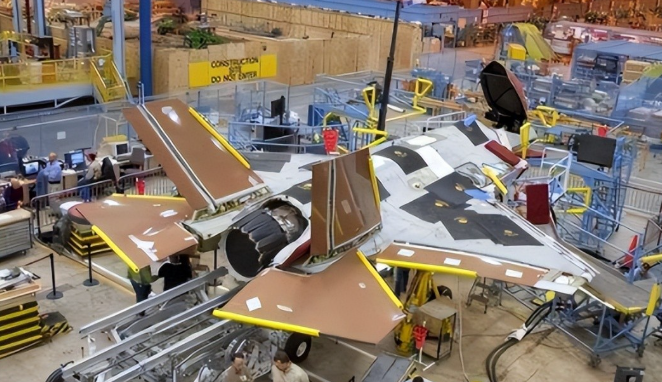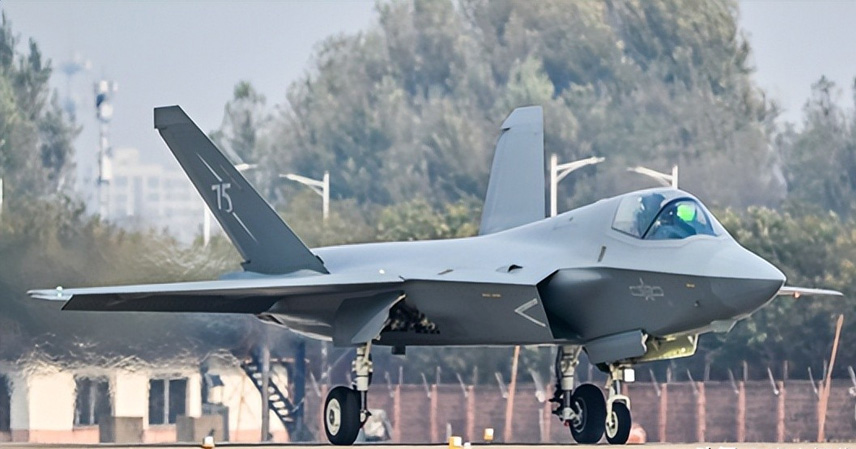Misconception: “30 Days, 60 Jets”
A recent CCTV report showing J-35 production lines sparked global attention. Headlines claimed that the PLA produced 60 jets in just 30 days, far outpacing the F-35. The truth is more nuanced.
The “30 days” actually refers to the time gap between the naval version’s official announcement (September 3, 2025) and the CCTV exposure—not the start of large-scale production. The initial air force version had been officially listed as early as November 2024, months before.

Understanding the Serial Numbers
The highly debated “3557” serial number doesn’t mean 57 aircraft were made in one month. Chinese military aircraft numbers are assigned by batch and type. Early test jets were numbered 3503, with subsequent prototypes like 3505 and 3506 used for carrier trials. Serial gaps include different variants and test prototypes, so cumulative numbers over a year—not one month—are reflected in 3557.
The “Green Aircraft” on the Line
The unpainted aircraft shown in CCTV footage are freshly completed airframes. They still require radar calibration, weapons integration, and other procedures before delivery. Even with efficient production lines at Shenyang Aircraft Corporation (SAC), a complete jet takes 2–3 months from frame to operational deployment. Therefore, the “60 jets in 30 days” claim is misleading; it represents cumulative production coinciding with the announcement.

Comparing Production: J-35 vs F-35
To evaluate claims of “world’s fastest production,” consider real F-35 numbers. In 2024, Lockheed Martin delivered 110 F-35s globally, less than the peak of 140. Production is slowed by over 800 known software and hardware issues, complex international supply chains, and occasional export restrictions.
J-35 production is now ramping up. CCTV footage shows five jets in simultaneous assembly stages, indicating accelerated throughput. While exact annual production numbers aren’t public, even at a projected 50 jets per year, the J-35 hasn’t surpassed F-35 global deliveries yet.
However, combined with J-20 production (~120 jets per year), China’s total fifth-generation fighter output already exceeds that of the U.S. for a single model. Additionally, most F-35s are exported, whereas the J-35 primarily fulfills domestic demand, further boosting strategic production capacity.

Industrial Base: The Real Advantage
The J-35’s rising production is not luck; it reflects China’s years of accumulated aerospace capability.
- Advanced Production Lines: SAC’s new “pulsed” production lines can simultaneously assemble J-35, J-15T, and J-16, reducing downtime.
- 3D Printing of Critical Parts: Titanium load-bearing structures are now 3D printed, reducing part count by 70% and defects by nearly half.
- Automation: Robotic arms complete key assembly tasks in 72 hours, over three times faster than previous lines.
- Domestic Supply Chain: Critical components, from the WS-19 engine to active phased-array radar and stealth coatings, are fully domestic. No “choke points” exist, unlike F-35s that rely on foreign parts.
Design Efficiency and Modular Approach
J-35 was designed to serve both the Air Force and Navy, compatible with electromagnetic catapults and ski-jump carriers. This single-model, multi-platform approach simplifies production. In contrast, the F-35 has three variants for different branches, increasing complexity and slowing deliveries.

Conclusion: Industrial Strength, Not Hype
The CCTV exposure and serial numbers reflect incremental technical and production achievements, not a miraculous “30 days, 60 jets” output. J-35 production showcases China’s growing control over fifth-generation fighter manufacturing and industrial independence.
Instead of sensational comparisons, the key takeaway is that while the U.S. debates F-35 issues, China has built a self-sufficient system capable of steadily producing advanced fighters. This is not “quietly getting rich”—it is the natural outcome of industrial capability finally coming to fruition.
References:
- CCTV Military Channel, “Inside Shenyang Aircraft: J-35 Production Lines,” 2025.
- Lockheed Martin, F-35 Program Status, 2025.
- Jane’s Defence Weekly, “Global Fifth-Generation Fighter Production Comparison,” 2025.
- PLA Air Force Official Announcements, 2024–2025.



